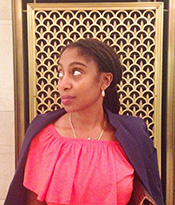Breaking down barriers: Plain Language
Plain language, also called plain writing, is described as “communication your audience can understand the first time they read or hear it.”
This writing method has helped the co-chairs of the new Plain Language Community of Practice Chris Coulter, Senior Communications Advisor at Transport Canada, and Asha St-Hilaire, Communications Advisors with Strategic Communications at Shared Services Canada, write much more clearly.

“I’m willing to do away with almost all bland, boilerplate text that doesn’t add any value. If the text doesn’t serve a specific purpose, I remove it, which is appreciated by my management,” said Chris.
According to the plain language experts, this approach uses every day words that people understand, while also avoiding “government speak”.
“It’s about being clear and unambiguous,” Asha explained, “It’s not about dumbing down your words; it’s about using simpler words intentionally.”
There are many misconceptions about plain language, including that managers, program and policy partners will never approve content written in plain language. Asha and Chris debunk this myth by explaining that nobody gets offended when something is easy to understand and most managers actually do appreciate content written in plain language.

“Every day, people are slowed down by too much information that is unclear and not really written for them. As someone working in internal communications, I can tell you the most effective way to get employees to take action—whether attending an event or meeting a deadline—is to write in plain language,” said Chris.
As for any advice on how to write in plain language, Asha and Chris recommend understanding the subject on which you are communicating, understanding your audience, and practicing the method in every day exchanges, through emails and chats, among others.
“To write in plain language, you have to really understand the subject and put yourself in the shoes of the reader,” said Asha.
The plain language Community of Practice is a network of communications professionals that work to help public servants communicate in plain language to their audience. To learn more about plain language, read the 12 Plain Language tips accessible only on the Government of Canada network) and contact the Plain Language Community of Practice for more information.
Page details
- Date modified: